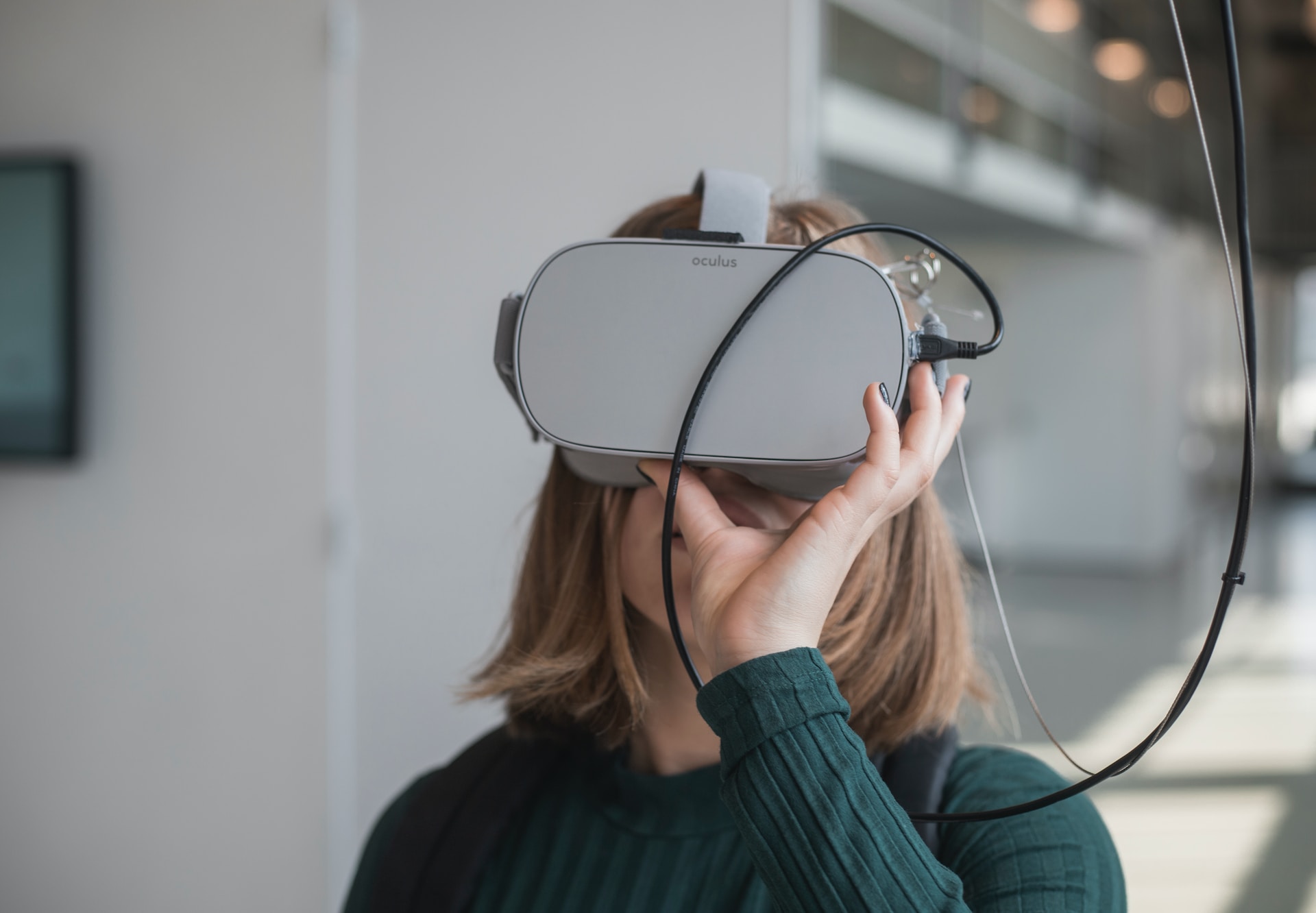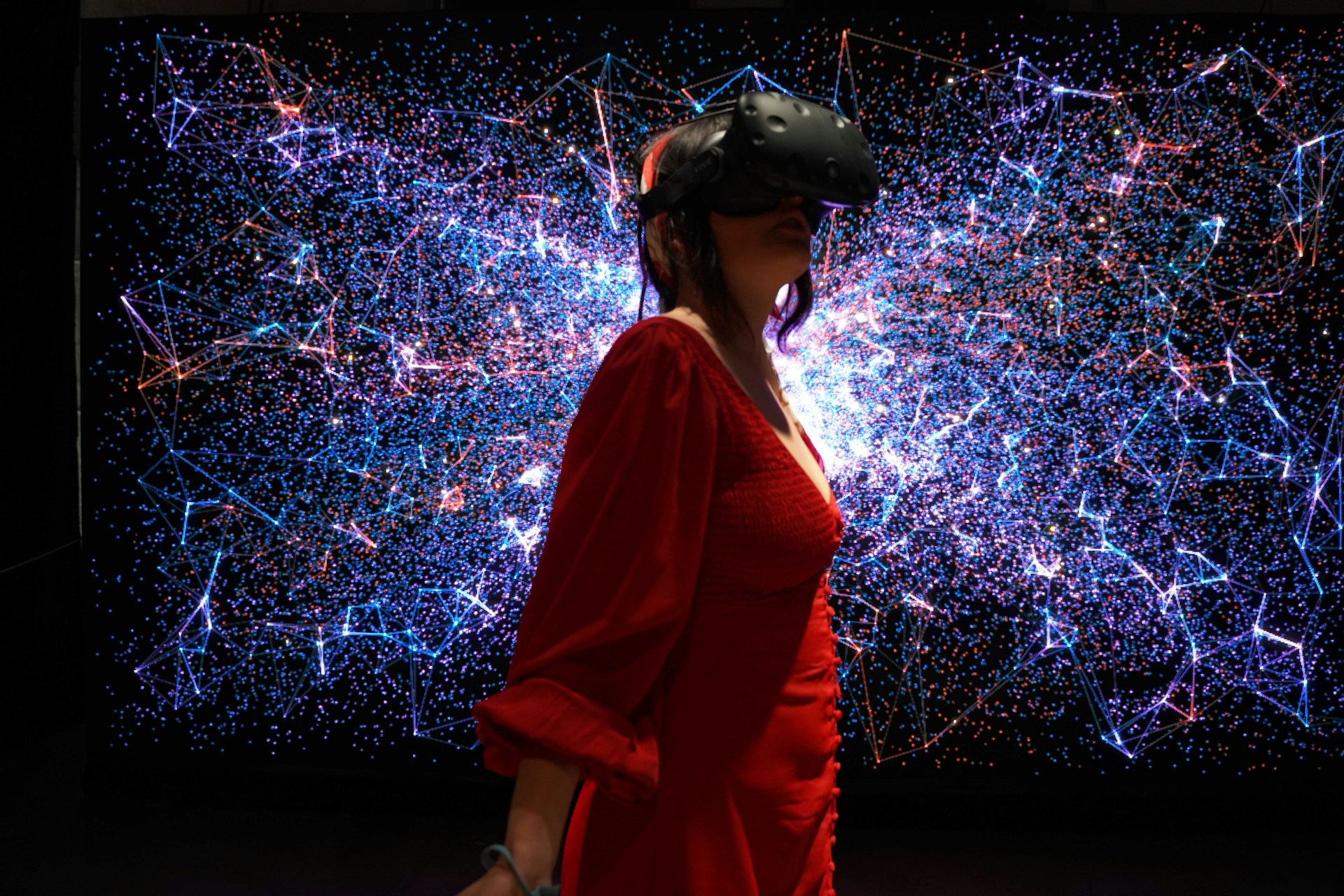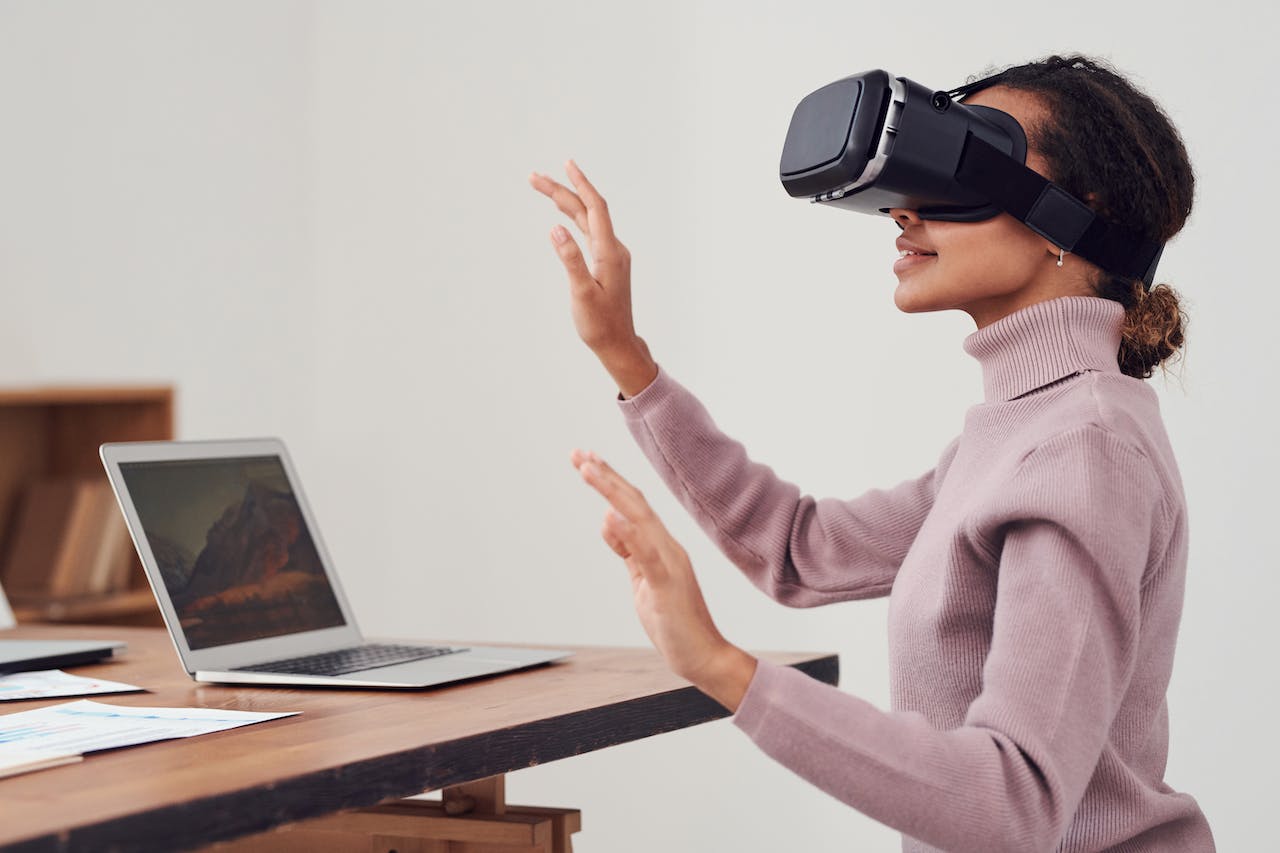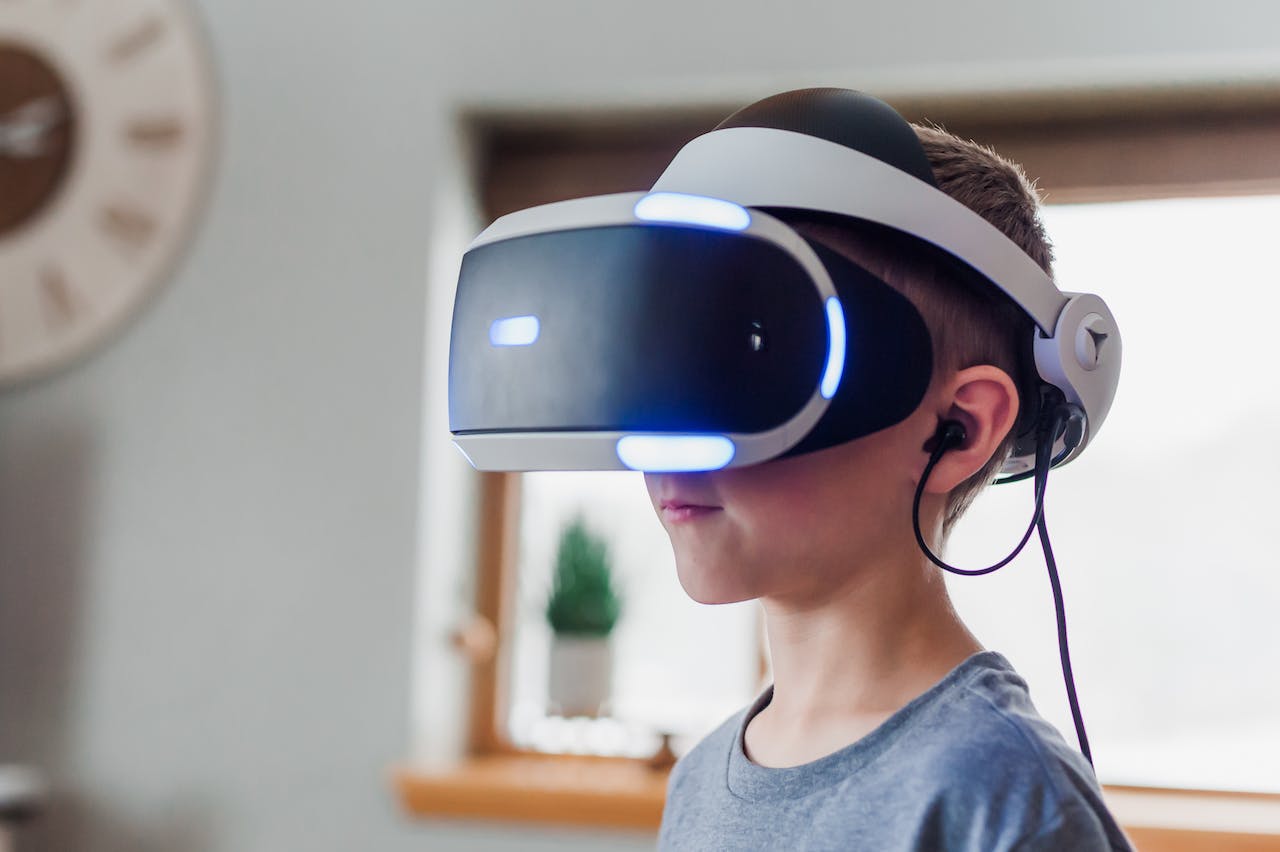Today, as we stand at the precipice of a new era, the fusion of VR and animation is not just a possibility—it’s an unfolding reality. With VR, animation escapes the confines of the two-dimensional screen, inviting audiences into a world where stories are not just seen, but lived.
Imagine being able to step into the vibrant, imaginative worlds created by animators, interacting with characters and environments in ways that were once the domain of pure fantasy. This is the promise of VR in animation: a promise that is gradually materializing into an exciting new form of art and entertainment. As we explore this emerging frontier, we are compelled to ask: What does the future hold for virtual reality in animation? The answers to this question may not only change the way we consume animated content but also transform the very nature of storytelling and artistic expression.
Historical Context
The journey of virtual reality and animation has been a fascinating one, marked by innovation and imagination. Animation, the art of bringing life to inanimate objects and drawings, has a rich history that dates back to the early 20th century. From the early days of hand-drawn cartoons to the sophisticated computer-generated imagery (CGI) of today, animation has continually evolved, pushing the boundaries of visual storytelling.
Concurrently, virtual reality emerged as a groundbreaking technology, initially conceptualized in the mid-20th century. VR’s early applications were primarily in simulation and training, but it was the entertainment industry that truly unlocked its potential. The introduction of VR headsets and immersive experiences in the late 20th and early 21st centuries marked a turning point, signaling VR’s capability to revolutionize how we interact with digital content.
The convergence of VR and animation began as a novel experiment but quickly grew into a significant trend. Pioneering works in the late 2010s demonstrated the potential of combining VR’s immersive environments with the creative freedom of animation. This period marked the beginning of a new chapter, where animated narratives could be experienced in 360 degrees, offering viewers an unprecedented level of engagement.
As we delve into the current state of VR in animation, it’s crucial to recognize this historical foundation. The past successes and lessons have paved the way for today’s innovations, setting the stage for an even more dynamic future.
Current State of VR in Animation
The integration of virtual reality in animation has reached a pivotal stage, where the novelty of VR is giving way to more substantive and innovative applications. Today, VR in animation is not just a tool for creating immersive experiences but is becoming a medium in its own right, offering unique storytelling possibilities.
One of the most exciting developments in this field is the creation of VR animated films. These films go beyond traditional viewing experiences by placing the audience inside the story, offering a 360-degree panorama of animated worlds. For instance, recent VR animations allow viewers to interact with the environment and characters, creating a sense of presence and engagement that traditional animation cannot match.
The technology powering VR animation has also seen significant advancements. Modern VR headsets provide high-resolution, low-latency visuals, essential for a seamless and immersive experience. Motion capture technology has become more sophisticated, allowing for more nuanced and lifelike animations. Additionally, real-time rendering technologies are enabling creators to iterate and visualize their animations within VR environments rapidly, a process that was previously time-consuming and resource-intensive.
Despite these advancements, VR animation is still in its early stages. The field faces challenges such as limited audience reach due to the need for specialized equipment and the high cost of production. However, the trend is clear: VR is transforming the landscape of animation, offering new creative avenues for animators and a more immersive and interactive experience for viewers.
Emerging Technologies in VR and Animation
Advanced Motion Capture and Real-time Rendering
The advancements in motion capture technology are revolutionizing VR animation. Today’s systems capture not just gross body movements but subtle facial expressions and gestures, translating them into incredibly lifelike animated characters. Moreover, the integration of real-time rendering allows animators to see their creations come to life instantly within VR environments. This combination is drastically reducing production times and opening up new creative possibilities.
Haptic Feedback and Sensory Integration
Haptic feedback technology is another exciting development. It adds a tactile dimension to VR animations, allowing users to ‘feel’ the virtual world. This technology can simulate everything from the brush of a feather to the impact of a virtual object, significantly enhancing the immersive experience. Additionally, incorporating other sensory inputs like smell and temperature is being explored to create a fully immersive VR experience.
AI-Driven Animation
Artificial Intelligence (AI) is set to play a transformative role in VR animation. AI algorithms can assist in creating more realistic and responsive environments. They can also generate adaptive narratives, where the story changes in response to the viewer’s actions. This level of interactivity could redefine storytelling in animation, making each VR experience unique to the individual viewer.
Cloud-Based VR and Accessibility
The future of VR in animation also includes cloud-based solutions, which could significantly improve accessibility. These technologies aim to make VR experiences more accessible by reducing the need for high-end hardware. By rendering VR environments on powerful servers and streaming them to devices, cloud-based VR could democratize access to high-quality VR animation.
Future Trends in Storytelling and Art in VR Animation
Immersive Storytelling Experiences
As VR technology continues to evolve, we can expect to see a significant shift towards more immersive storytelling experiences in animation. VR offers an unparalleled medium for storytellers to create deeply engaging worlds where the viewer becomes an active participant rather than a passive observer. Future VR animations are likely to feature narratives that adapt in real-time to the viewer’s decisions and interactions, creating a personalized storytelling experience.
Blurring the Lines Between Reality and Animation
The integration of VR in animation is set to blur the lines between reality and the animated world. With advancements in rendering and graphics technology, animated environments will become increasingly realistic, challenging our perceptions of what is real and what is animated. This will not only enhance the visual experience but also deepen the emotional connection viewers have with the narrative.
Interactive and Non-Linear Narratives
The future of VR animation holds great potential for interactive and non-linear narratives. Unlike traditional films, VR animations can offer multiple story paths, allowing viewers to choose their journey through the narrative. This interactivity introduces a new layer of complexity in storytelling, as creators will need to design narratives that are engaging and coherent across various pathways.
The Role of AI in Dynamic Narratives
AI’s role in VR animation is set to expand, particularly in creating dynamic and responsive narratives. AI can be used to craft stories that adapt and change based on the viewer’s interactions and choices. This could lead to highly personalized storytelling experiences, where the narrative feels responsive and alive, reacting uniquely to each viewer.
Enhanced Artistic Expression
Finally, VR opens up new avenues for artistic expression in animation. Animators and artists will have the freedom to experiment with spatial and temporal elements in ways that are impossible in traditional 2D or 3D animation. The immersive nature of VR provides a canvas for creators to explore new forms of artistic expression, pushing the boundaries of what animation can be.
Industry Impact and Challenges
Transforming Production and Distribution
The advent of VR technology is transforming the animation industry in several key ways. First, the production of animation is evolving, with VR enabling more immersive and interactive content. This requires a shift in skill sets for animators and designers, as they must now consider a three-dimensional, interactive environment. Additionally, the distribution of animated content is changing. VR animations are not confined to traditional media platforms but are often distributed through VR platforms and apps, which broadens the potential audience but also presents unique marketing challenges.
Economic Impacts and Funding Challenges
The economic landscape of the animation industry is also being reshaped by VR. Producing high-quality VR content can be expensive, requiring significant investment in technology and skilled personnel. This raises questions about funding and monetization, as the traditional revenue streams for animation may not apply to VR content. The industry must explore new business models to sustain the growth of VR animation.
Accessibility and Reach
Another challenge is accessibility. While VR technology is becoming more affordable, there remains a barrier to entry for many potential viewers who do not have access to VR headsets. This limits the reach of VR animations and poses a challenge for creators looking to attract a wide audience. Strategies to increase accessibility, such as through mobile VR solutions or more affordable hardware, are crucial for the growth of the industry.
Technical Limitations and User Experience
Lastly, there are technical limitations and considerations in creating VR animations. Ensuring a high-quality user experience is paramount, as poor execution (e.g., low-resolution graphics, latency issues) can lead to discomfort or disinterest in VR content. Balancing the technical demands with the creative vision is a constant challenge for VR animators.
Conclusion
VR is set to revolutionize the field of animation, offering new ways to tell stories, engage audiences, and express artistic visions. The immersive nature of VR animation promises a future where stories are not just watched but experienced, where audiences can step into and interact with the animated worlds like never before.
Despite these challenges, the potential of VR in animation is immense. It holds the promise of transforming not just how we view animation but how we connect with it on a deeper, more personal level.
As technology continues to advance and overcome current limitations, we can expect VR animation to become an increasingly integral part of the entertainment landscape. It will not only entertain but also educate, train, and perhaps most importantly, inspire new generations of creators and viewers alike. The future of VR in animation is a journey of endless possibilities, and it is one that we are just beginning to embark upon.
Explore the exciting possibilities of virtual reality in animation and its potential to reshape the art world. Discover more about the transformative impact of virtual reality on traditional art galleries in our article, How Can Virtual Reality Transform Traditional Art Galleries?





